How to adjust sprinkler heads: top tips for success
Find out how to adjust sprinkler heads and meet the needs of your lawn, plants and crops
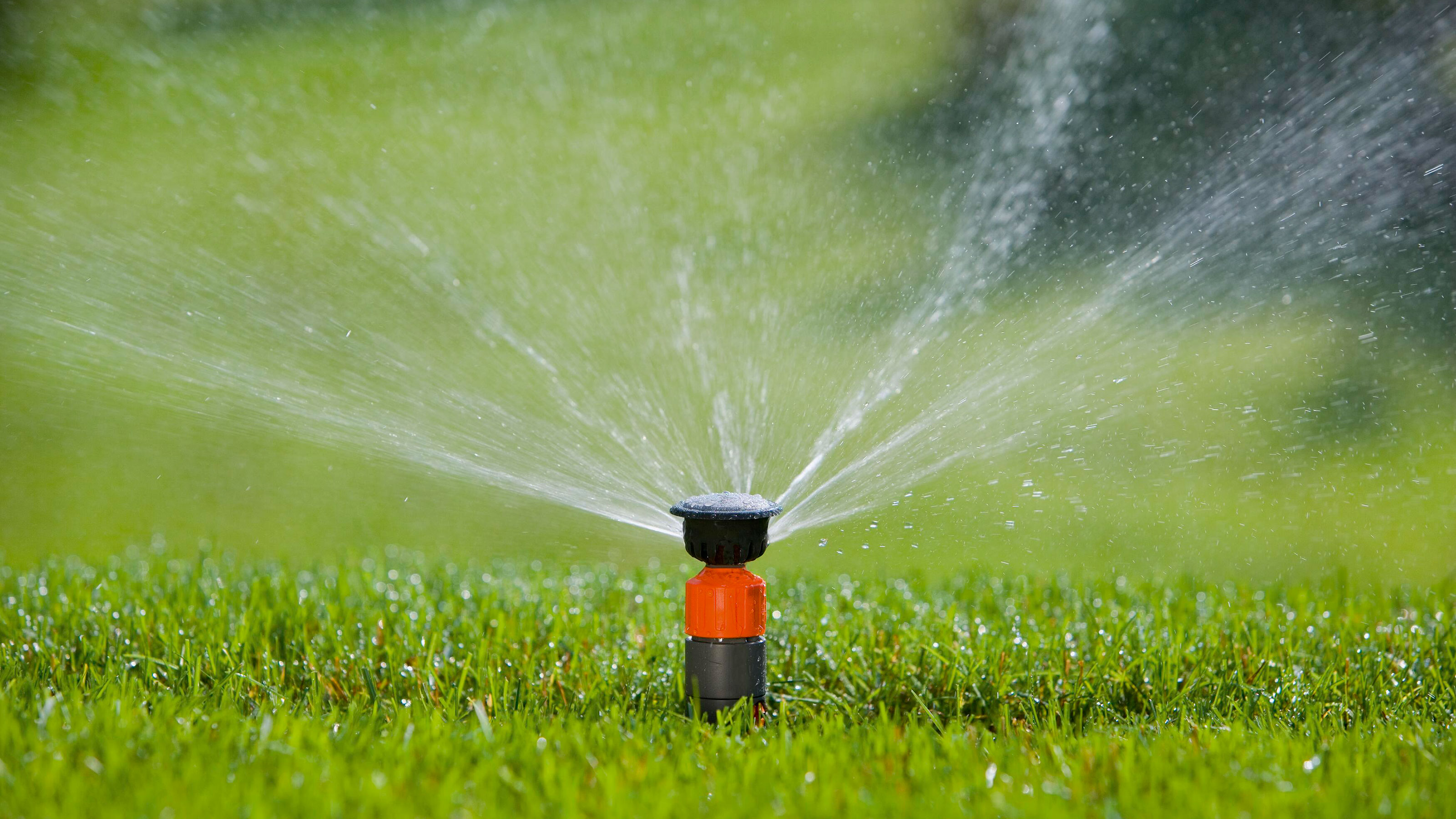

Wondering about how to adjust sprinkler heads? Knowing what to do is important to ensure your irrigation system continues to function well, delivering the right amount of water to every part of your lawn and flower beds.
It’s the case that different areas of your lawn and yard can have different requirements – some are more shaded, some are in direct sun, for example, and some areas drain better. So, to ensure different areas of turf aren’t over or underwatered, it can be necessary to adjust sprinkler heads. Equally, if your sprinkler is spraying the sidewalk and wasting water, you’ll want to avoid this issue.
We’ve got the details on how to adjust sprinkler heads right here to make watering plants and your lawn a breeze, along with advice from gardening experts on the task.
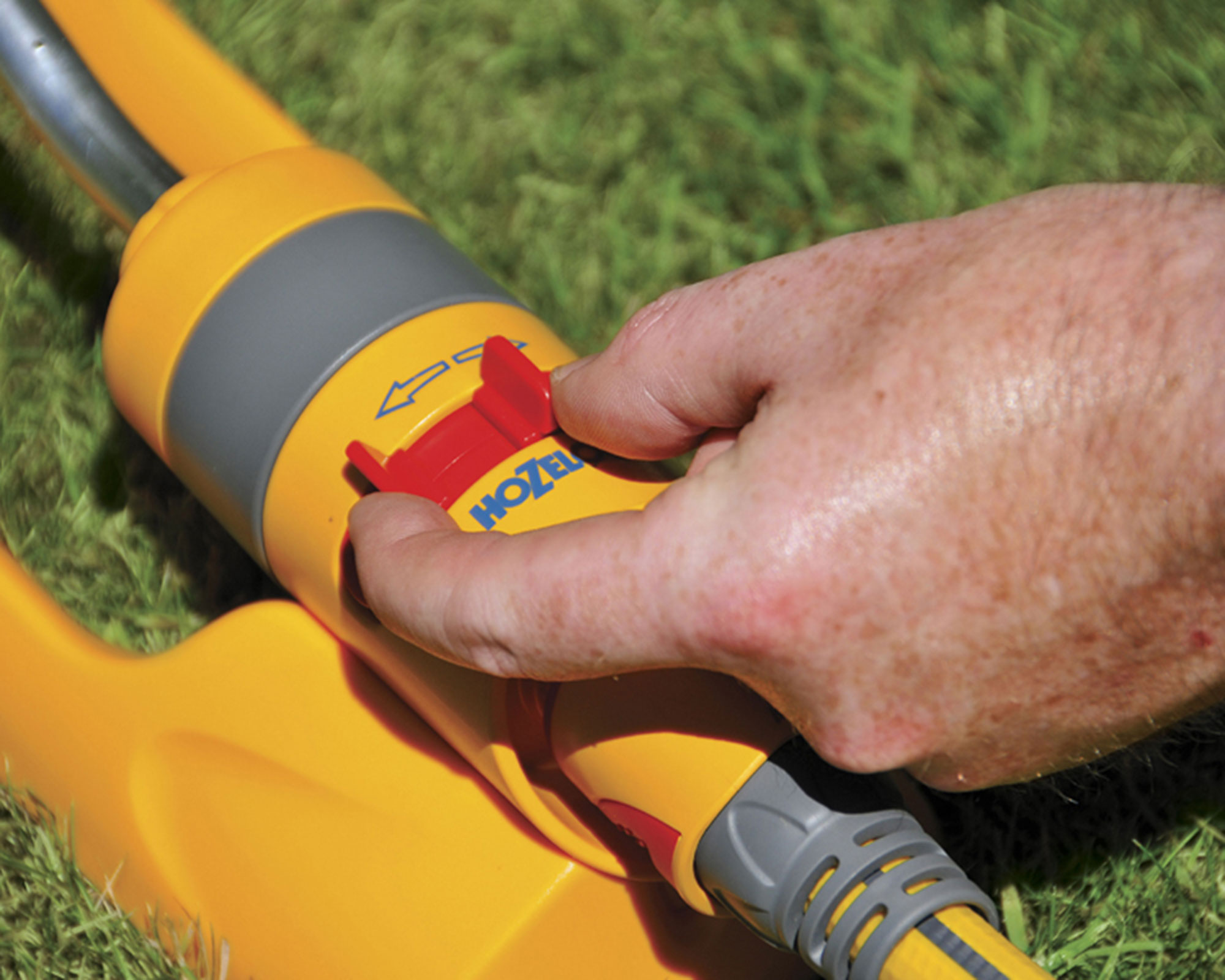
Expert tips on how to adjust sprinkler heads
‘Adjusting sprinkler heads can be challenging because there often is not a one-size-fits-all solution; there are many different types of sprinkler heads and other factors to consider before adjusting your sprinkler heads,’ advises Darik Chandler from Rachio.
However, there are techniques different types of garden sprinkler heads have in common and we’ve got the lowdown on those here, along with information on how to adjust Rain Bird sprinklers.
Before you begin, be mindful that not all sprinkler heads are adjustable. Some have a specific spraying pattern which can’t be changed. Those that are adjustable will have a screw or an alternative device for the task.
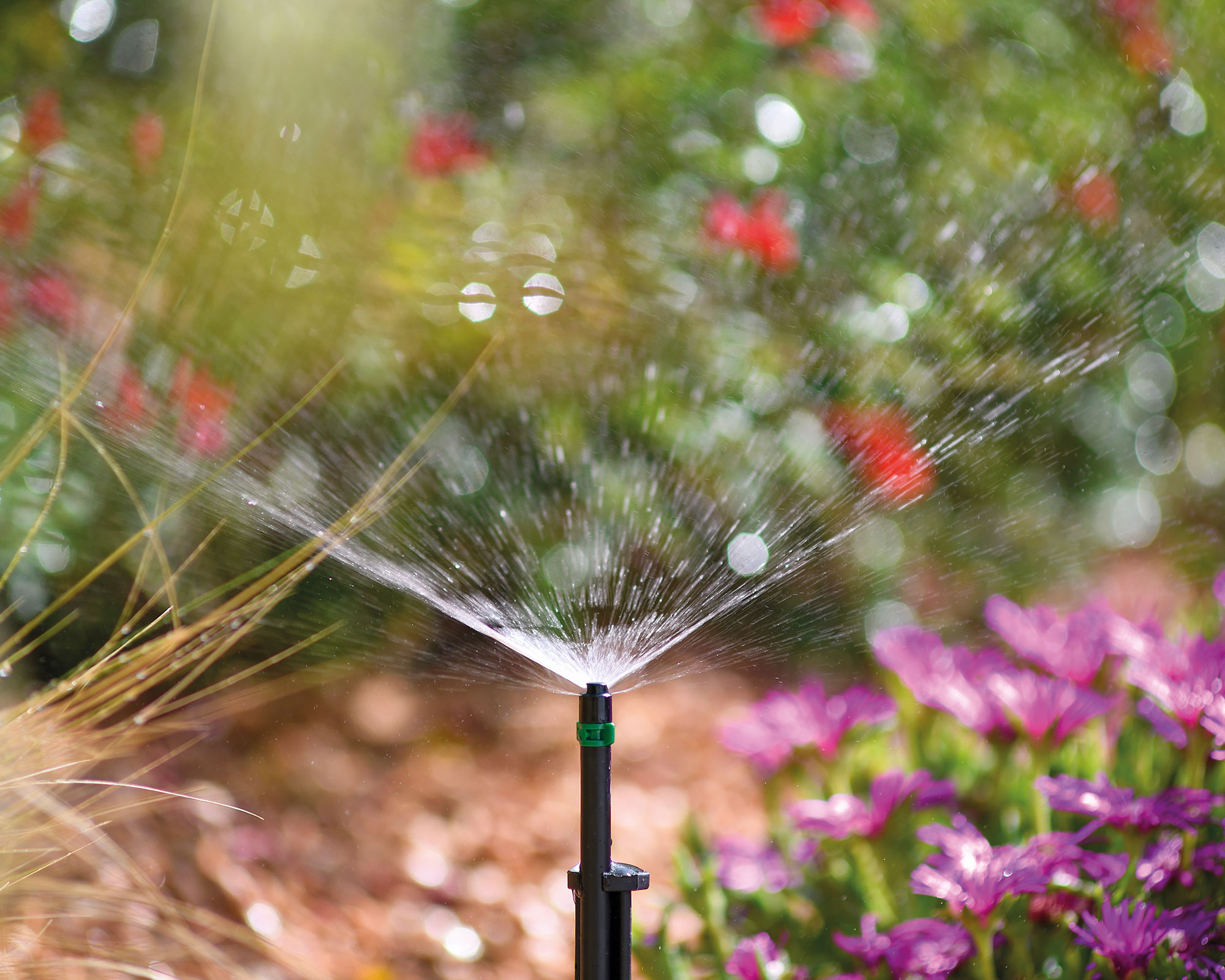
How to adjust a pop-up sprinkler head
A pop-up sprinkler head needs to be in the up position for adjustment.
- Use a flat-headed screwdriver to turn the small screw at the top of the nozzle.
- As a rule, if the sprinkler is overspraying, turn the screw clockwise.
- If it is underspraying, turn the screw counterclockwise.
- To adjust the arc, check the manufacturer’s instructions for your model.
How to adjust a rotor sprinkler head
If you have a rotor sprinkler head, you can adjust both the radius (how far the sprinkler sprays), and the arc of the spray. You may need the manufacturer’s adjustment tool to make the task easy, and you should follow its instructions on adjustment.
And if you're unsure of the benefits of this type of sprinkler, there are plenty of tips to help you in our guide to sprinkler rotor vs spray.
How to adjust an impact sprinkler head
You can adjust the arc of an impact sprinkler head. As a rule, you’ll just need to rotate the head, and it might be worth investing in an adjustment ring to make the process easy:
- Turn the head clockwise to increase the arc.
- Turn the head counterclockwise to decrease the arc.
How to adjust Rain Bird sprinklers
To adjust a Rain Bird sprinkler, you should always check the instructions for your particular model as these can vary.
However, typically, these are the steps to follow:
Rain Bird adjustable spray sprinklers
- To adjust the pattern of an adjustable spray sprinkler model, first set the left point, which is marked, by twisting the stem of the spray head.
- Adjust the throw pattern from 0 to 360˚ by turning the collar at the bottom of the nozzle clockwise or counterclockwise.
- To adjust the spray distance, turn the center screw with a small flat screwdriver.
- Turn it clockwise to reduce the spray distance.
Adjusting Rain Bird rotor sprinklers:
- To adjust the arc of coverage, use the arc adjustment screw on the top of the head. Turn the screw clockwise to increase the arc or, to decrease the arc, turn it counterclockwise. Note that with the water on, you should only turn the arc adjustment screw in the rotor’s turn direction to avoid damage.
- With the water on, adjust the throw distance of the water by using a flat-bladed screwdriver to turn the radius reduction screw on top of the sprinkler. This will allow you to decrease spray distance up to 25 per cent.
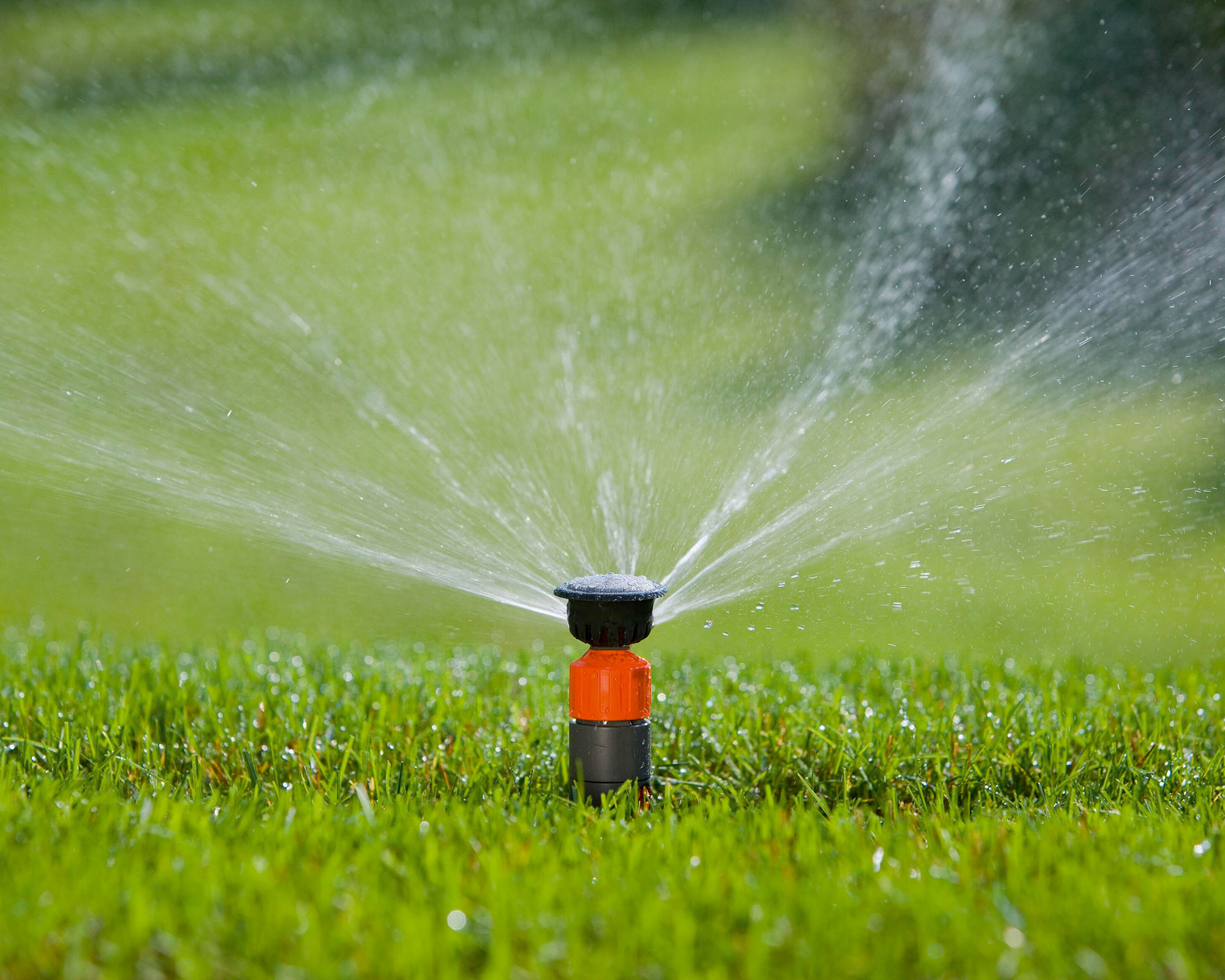
How do you adjust the spray radius on a sprinkler head?
It can be possible to adjust the spray radius, that is the distance the water is thrown, on your sprinkler head, but this depends on the model.
For example, Sarah Dixon, UK and international marketing manager at Hozelock, says, ‘There is a button located on the side that you can rotate.’
Meanwhile, Gardena expert Edward Cantle says, ‘It’s easy to adjust the Gardena sprinklers, once installed; simply use a screwdriver to adjust the upper screw in the sprinkler to adjust your range for more precise, accurate irrigation.’
And frequently it is a matter of turning the screw at the top with a small flat-bladed screwdriver clockwise to reduce the radius and counterclockwise to increase it.
Always check the instructions for your particular sprinkler head model before attempting to adjust the spray radius to suit your lawn care routine.
Do you need a special tool to adjust sprinkler heads?
Whether you need a special tool to adjust sprinkler heads depends on the manufacturer and model.
‘No equipment is needed, you simply just rotate the button,’ says Sarah Dixon, when discussing Hozelock’s designs.
Darik Chandler from Rachio advises that, in general, ‘You can adjust fixed sprinkler heads using a flat head or common screwdriver. For rotary heads, you will need the manufacturer’s specified tool to make any adjustments. When adjusting your sprinkler heads, make sure you have head-to-head coverage, so all plants receive the right amount of water.' Darik adds that doing this is also a good garden water saving tip as it eliminates overspray, which can lead to water waste.
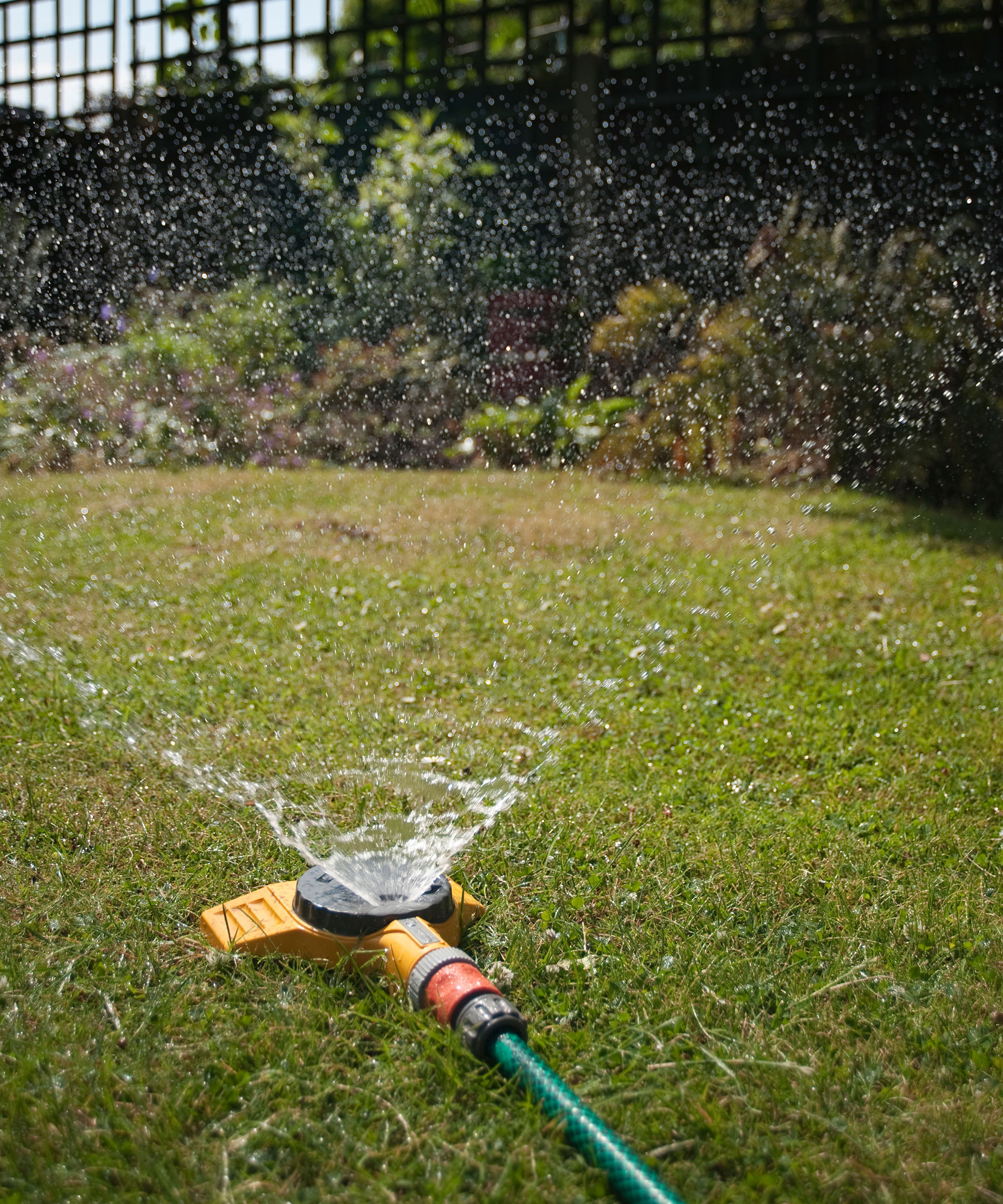

Sarah is a freelance journalist and editor writing for websites, national newspapers, and magazines. She’s spent most of her journalistic career specialising in homes and gardens and loves investigating the benefits, costs and practicalities of home improvement. It's no big surprise that she likes to put what she writes about into practice, and is a serial house revamper.
